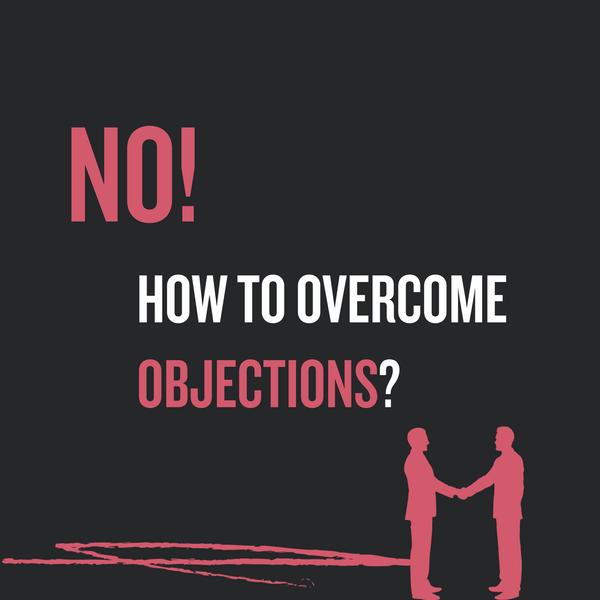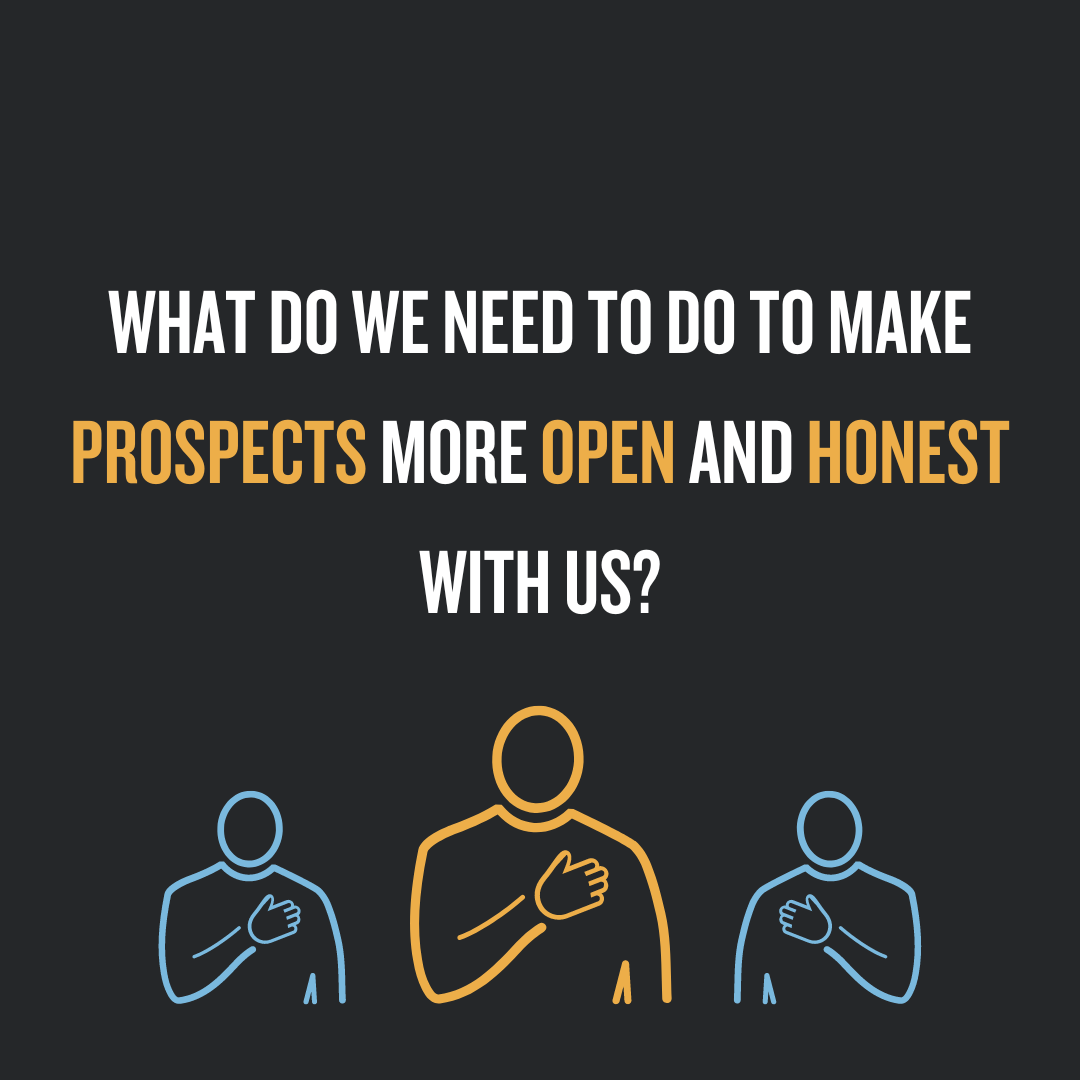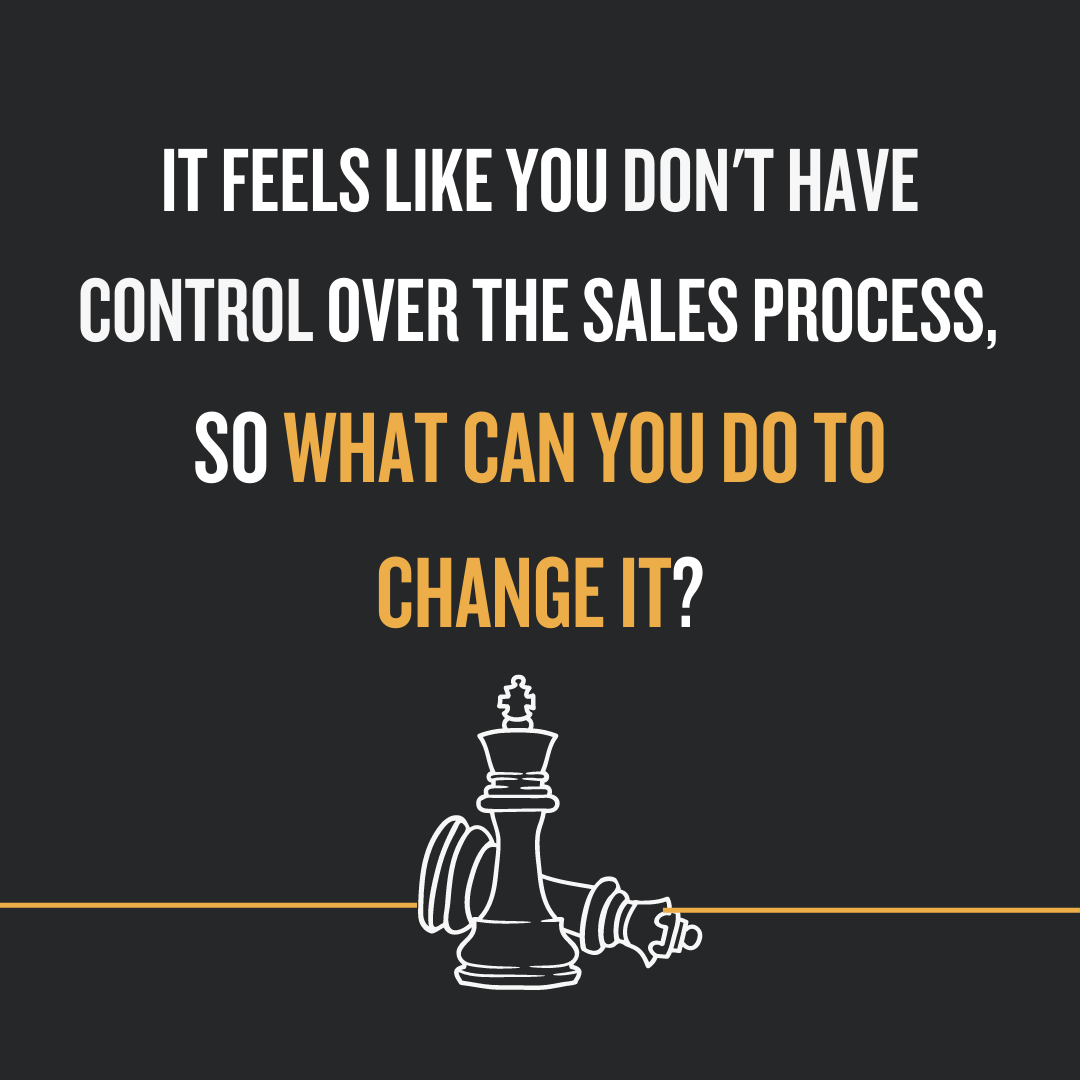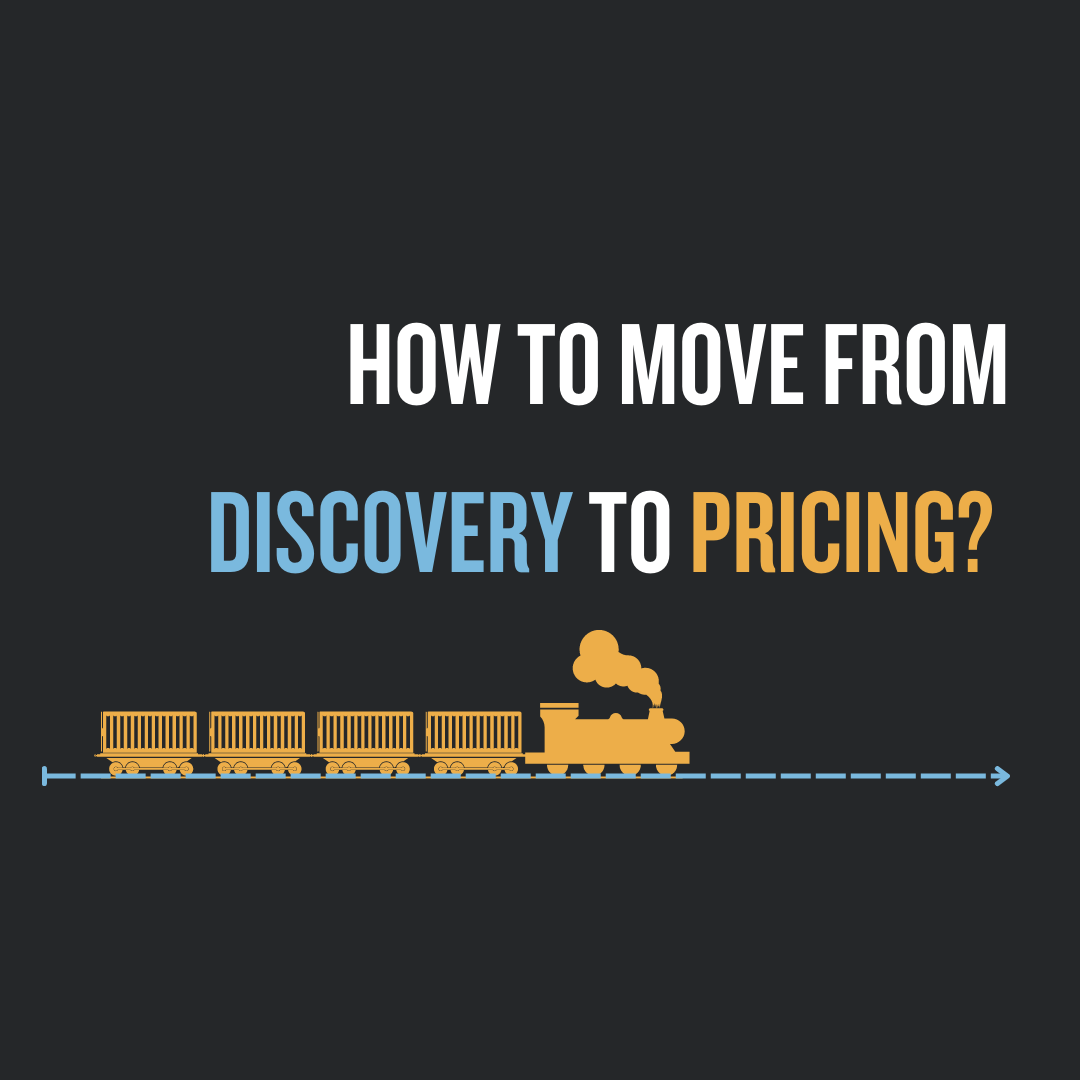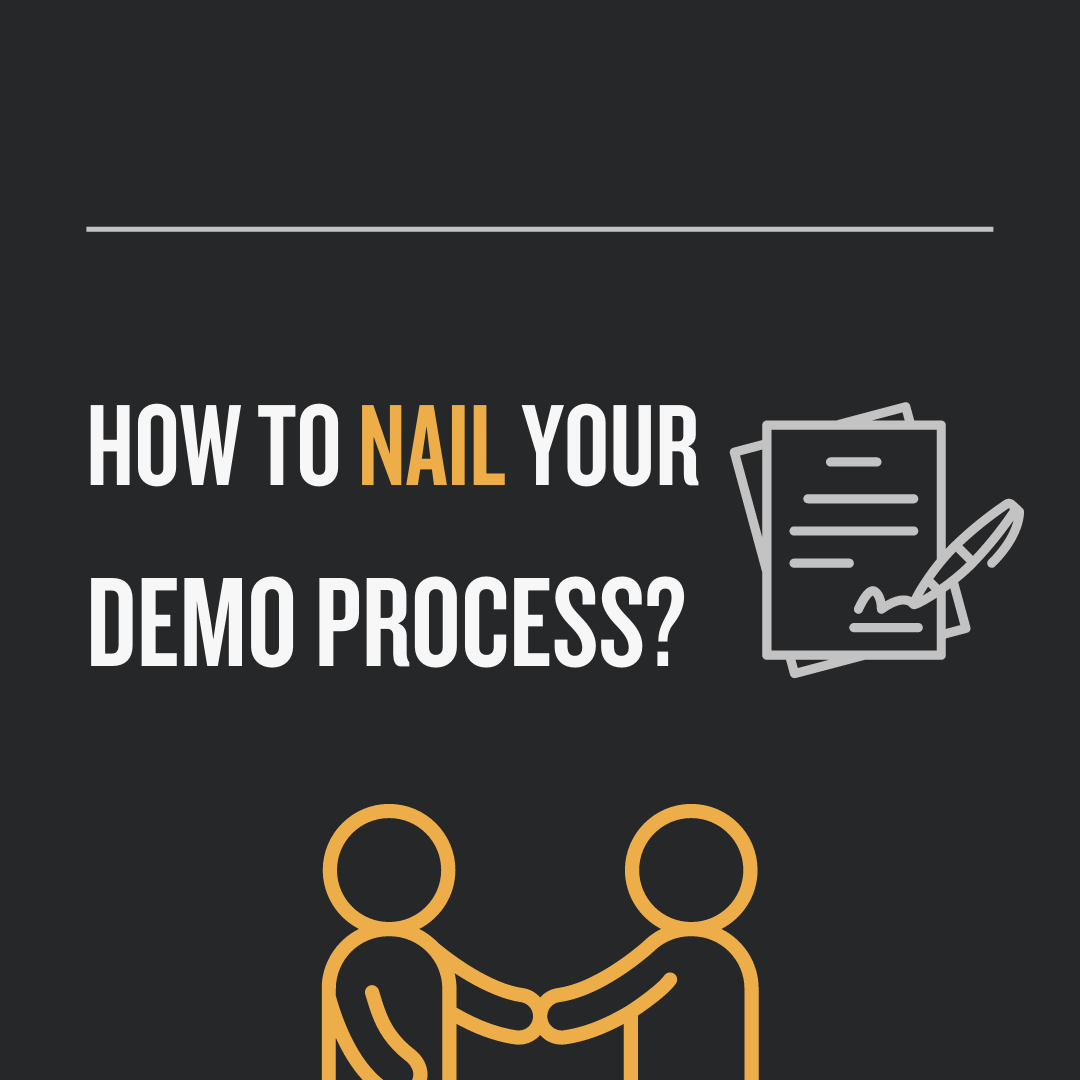In this article, I’ll take you through eight key steps to plan your B2B sales meetings in a way that sets you apart from the competition.
Preparation is the secret to closing sales – and it needs to happen for every encounter with a prospect. Before each meeting, answer three key questions:
Why should this client meet with me?
What do I want my client to do?
How can I provide value in this encounter?
Why should this client meet with me?
Step 1: Create the right mindset
“If your intention is flawed, the best technique in the world will not save you.” – Jeff Shore
Get into an optimal mindset before your meeting. This will ensure that your non-verbal communication sends out the right signals.
Begin by completing the following sentence with each of your motivations: “Thanks for meeting me today! My no. 1 priority is to [fill in the blank with your response].”
Now, review your responses. Would you be willing to say these reasons out loud to a prospective client?
Maybe not. But guess what? Your tone, expressions and body language are already communicating your true intentions, regardless of your words. Prospects can pick up on these subtle signs faster than you think.
That’s why it’s crucial to create an appropriate mindset for your sales meetings – one that you don’t need to hide or be ashamed of. This is a fundamental first step to closing more sales.
When you’ve got the right mindset, your body language will reflect it by:
- Showing positive micro-expressions
- Delivering the ideal tone of voice
- Expressing appropriate emotions with which your prospective client will empathize
- Communicating the right intention to strengthen trust and rapport
You can unlock seven sales-friendly mindsets in this article on creating the right mindset for B2B & SaaS founders.
Reinforce your positive mindset by repeating a few statements aloud before your meeting:
- “I really care about this client. I can’t wait to see what I can do for them.”
- “I’m genuinely looking forward to helping these guys.”
- “I’m curious to find out what this client has going on – and how I can help them to make it better.”
Step 2: Clarify your value proposition
“Don’t tell me what you do, tell me what you do for me” – Sean Sheppard
Why should a prospect spend even one minute talking with you? What is it about your offer that can benefit your potential client? What tangible values does it create for them?
The answers to these questions form the heart of your value proposition.
Your value proposition is a clear statement of the measurable results a client gets from using your product/ service. In other words, it’s what you do for your customer. The best value propositions are specific, often with numbers or percentages.
Most people tend to describe what they do instead of the value they bring – which is a big mistake. You must learn to articulate the real value you deliver.
Without a clear value proposition, you’ll find it tough to command the price you want for your solution – because prospective clients will have no tangible value to compare against your price. That means your product/ service will end up simply looking like an extra cost.
The lack of a value proposition also means you’ll get lost in a sea of vendors. Your prospect will assume that your solution is just like all the others in this space – how can they know any better?
To put it another way, your value proposition is mission-critical information that you must have in order to close a sale.
A basic value proposition has three key components:
1. Metrics: Metrics answer the question, “How do you measure whether you’re doing well in this area?” All businesses have metrics – sometimes formalized, sometimes not. Find the metrics your potential clients use to measure performance by answering a few questions:
- What tells you that you’re doing well?
- What tells you if something is going wrong?
- What suggest you could be doing better?
2. Direction: Direction answers the question, “What’s happening to the value of this metric?”. Should it be going up or down? The answer depends on the context. E.g., you want sales revenue to go up and material costs to go down.
3. Magnitude: Magnitude answers the question, “By how much is the metric going up or down?” What is the actual value of the change? Did it go up or down by a percentage? Was it reduced by a fixed amount?
With these three components, you can put together a basic value proposition.
Here’s a formula to increase clarity and make an impact: [Direction] + [Metric] + [Magnitude]
For example, We increase lead conversion by an average of 47 percent.
Developing a Unique Value Proposition for your product/ service is a comprehensive process that is beyond the scope of this article. For a better understanding, check out my article on design UVP that makes sales easier.
Step 3: Research your client
“Want to sell more? - Forget closing techniques, master your discovery calls” – Chris Orlab
If you’ve ever been to New York, you would have seen the city’s famous yellow taxi cabs. Did you know that to qualify as a full-fledged taxi driver, one needs to know the streets and routes of New York like the back of their hand?
Similarly, to navigate and lead a sale effectively, you must do your homework and gain all the knowledge that is relevant to your prospect.
Chris Orlob’s company Gong collects and analyzes data on millions of sales calls. According to their research, there’s a linear relationship between the number of questions you ask earlier in the sales cycle and your likelihood of closing a deal.
Learn about your prospect’s situation and figure out what you know – and what you don’t. This will help you create a realistic picture of the best value you can bring to them.
Research means gathering, analyzing, and interpreting various types of information about your potential client, such as:
- drivers and characteristics
- industry, market, sub-markets
- challenges and risks
- financial status
- goals and objectives
- resources and constraints
- the priority level of specific issues
- details of this potential opportunity
- alternatives they may be considering
- decision-making process
Keep in mind that even a large company has smaller business units that operate independently.
For example, GE has 300,000 employees and annual revenues of more than $150 billion. Break it down a step and you’ll see that GE is actually made up of six companies. Each of these companies has various divisions, like marketing, IT, and HR, which function independently.
So, it’s crucial for you to focus on who is “really” going to be your customer. You should:
- identify the decision-maker
- conduct due diligence
- figure out where the problems and gaps might be in their operation
- create a tailored “getting in” strategy
Also, try to answer a few key questions about your primary prospect, so you can anticipate their thoughts and responses:
- What keeps them awake at night?
- What are their three top day-to-day frustrations?
- What trends are relevant to their business?
- What do they secretly desire the most?
- Who is their greatest competitor, and why?
If you haven’t yet had the opportunity to conduct discovery or talk much with your prospect, then:
- Do whatever research possible before your next meeting, and
- Make discovery the goal of your next meeting.
Points that you’re unable to clarify through independent research can be addressed in the meeting. Create a set of information-gathering questions, and prioritize them by importance.
In case there isn’t enough time, which questions will you ask and which will you leave out?
Once you have this essential information, you’ll be able to describe – confidently and accurately – why your prospect should meet with you.
One final suggestion: Just as you go deep into the prospect’s needs, you also need to fully understand your own product/ service.
The idea is to list every possible feature and benefit, then organize them by importance – from the prospect’s point of view.
Remember, nothing is perfect. Every product/ service has some drawbacks. Admit to yourself the limitations of your offer and – instead of looking at them as obstacles to a sale – view them as a way to make your message more believable and persuasive.
What do I want my client to do?
Step 4: Set your goals and agenda
“Hope is not a strategy.” – Rick Page
It’s crucial to be clear about what you want to achieve in the overall sales opportunity – as well as in each sales encounter.
When asked what their objective is for an individual sales encounter, most people say “to close the sale”. However, the typical sales cycle involves 4-10 sales encounters. For more complex products/ services, it might be even longer.
So, closing the sale is a feasible goal only towards the end of the sales cycle. Saying that you want to “close the sale” during an early meeting is unrealistic.
Other people go into a meeting thinking, “I’ll engage the prospect, then let’s just see where it goes. Hopefully, something will happen!”
That’s not really a strategy – it’s a shot in the dark. If you don’t even know your real goal for the meeting, how can you possibly hope to achieve it?
Take a more intentional, organized approach toward sales by developing clear goals for individual sales encounters – which are separate from your objective for the overall sales opportunity.
Ask yourself, “What is the desired outcome of my upcoming encounter with this person/ group?”
Once you are clear about your goal, the best way to ensure a productive meeting is to develop a solid agenda for it. This ensures that the time invested has a valuable return for everyone involved.
Aim for a win-win scenario in which you achieve your personal goal as well as deliver great value to your prospect.
A meeting agenda offers a ton of benefits:
- It positions you as a true professional.
- It defines objectives, sets expectations, and shows attendees why they need to be there.
- It gives structure to the conversation and allows you to reserve time for important topics, such as establishing the next steps.
- It gives you a concrete way to measure the success of the meeting.
Set an agenda for every single sales meeting, keeping the focus on the prospect’s stated interests. Share and confirm your agenda with the prospect, and make sure it meets their expectations.
While creating your agenda, consider these questions:
- What is the meeting’s main purpose from my prospect’s point of view?
- What specific directives or expectations does my prospect have for this meeting?
- Who are the participants, and what are their individual objectives?
Also, think about the way you will position yourself:
- How will I open the meeting?
- What strengths do I bring to this opportunity?
- What might the prospect consider to be my weaknesses?
- What can I do to increase my credibility?
- How will I demonstrate my understanding of the prospect’s current situation and challenges?
Your agenda should include three key elements:
1. Logistics: The date, start and end time, location, and invitees of your meeting.
2. Meeting objective: State the purpose of the meeting in a single sentence, if possible. It should be:
- Stated from the client’s perspective.
- Focused on the outcomes they want to achieve.
- Specific enough to keep the meeting focused, yet also broad enough to engage all attendees.
For example: “Discuss strategies for growing business despite challenges with low customer engagement” or “Review implications of 100% cloud deployment”.
3. Items: These are the “meat” of your agenda – the topics you plan to discuss, in the appropriate sequence. They show why your attendees are there and help to keep your meeting on track.
Step 5: Clarify continuation vs. advance
“Do not confuse motion and progress. A rocking horse keeps moving but does not make any progress.” — Alfred A. Montapert
Have you ever been trapped in an endless back-and-forth with a potential client, which ends up going nowhere? To stop wasting precious time and effort on such “pretend opportunities”, learn to differentiate between these three concepts:
1. Close — a commitment to buy. This is the final step of the sales cycle, which marks the transition to ownership and use of the product/ service.
2. Advance — a significant step that costs the potential client some kind of effort, time, or money. This moves the sales process forward, towards a decision.
3. Continuation — no specific action is agreed upon by the customer to move forward. The sales cycle continues.
Closing the sale is an obvious step. But it’s easy to get confused between advance and continuation, which can cause the sales process to drag on and on — without any concrete outcome.
For example, you might find yourself in situations like the below, over the course of several months:
- From an early contact, “They mentioned knowing client XYZ. I emailed them some information.”
- At an on-site visit, “I was able to get useful data.”
- From a meeting, “It went well — they loved my demo.”
- On another visit, “We met for breakfast and I followed up with literature.”
- Upon visiting, “They were impressed by our staff, and I offered them a sample plan.”
- From another contact, “We conducted another demo.”
- From another visit, “We strengthened our relationship over coffee.”
- After yet another call, “I checked if they wanted a proposal and costing, and they said yes.”
All of these are continuations — not a single one of them counts as an advance because they didn’t cost the client anything significant. Continuations indicate only interest and curiosity — which are nice, but not a good enough reason to keep investing your time and energy.
An advance, on the other hand, gives you reasonable assurance of a positive outcome. Without an advance, the sale cannot move forward.
So, your objective for every sales encounter should be some sort of advance — not a continuation.
A continuation that is frequently mistaken as an advance is when the prospect asks for a proposal. Remember, this only indicates curiosity about pricing. It doesn’t require any commitment or effort from the potential client, so it’s an easy request for them to make. Don’t read too much into it!
Step 6: Define your advances
“Without a ‘next step,’ you are likely working with someone who is fully not engaged. A ‘next step’ is a crucial delineator between real opportunities and pretend opportunities.” — Tibor Shanto
You might say your goal is to get the prospect to show interest, strengthen your relationship or gather useful information. And you may judge the success of this goal on the basis of the prospect’s words, expressions, or body language.
While these activities and signs are definitely positive, they’re not enough of a reason to keep investing your time and energy in a prospect.
To keep the momentum going, you need to ensure regular, appropriate advances — which require the prospect to make a significant effort.
Generally speaking, every sales meeting has the same goal — to get the prospect to commit to an advance.
Remember, an advance should:
- be specific and measurable
- focus on the action the prospect will take
- move the sale forward
- be reasonable from the prospect’s point of view
The test for an advance is action and energy. If the potential client isn’t taking action, it’s not an advance. If the action they take requires little to no energy, it’s not an advance.
The action and energy a prospect expends during or after a meeting do two crucial things:
- It shows you how engaged they are, and
- It moves the sales process one step nearer to closing.
Typically, the more energy the prospect is willing to spend, the more serious they are about moving forward. Based on this, you can decide how much time and effort you want to invest in a specific sales opportunity.
In other words, an advance is like a litmus test you can use to qualify your potential clients.
In your enthusiasm for the sale, you might sometimes take on extra work on behalf of the prospect. Unfortunately, this is actually counter-productive as it prevents the possibility of an advance.
For example, let’s say the prospect needs to do an assessment before the sales process can continue. If you volunteer to do it, you’ll learn nothing — instead of healthy collaboration, you’ll end up in a one-sided relationship.
Instead, wait and observe how the prospect responds to the need for an assessment. Are they willing to spend the energy required? If not, you either need to convince them or walk away. On the other hand, if they invest in a comprehensive assessment, that tells you a lot about their seriousness.
By offering to do everything and never getting prospects to do anything, you’ll miss out on the chance to gauge their commitment. As a result, you’ll end up wasting a lot of your time on “pretend opportunities” that don’t eventually pay off.
There’s nothing wrong with offering free services to prospective clients to further a sales opportunity. However, do it sparingly. Keep in mind that no prospect will ever turn down such an offer — because it requires no commitment on their own behalf.
Here are some examples of advances:
- Arrange for you to meet with a higher-level decision maker
- Schedule a site visit to see the product in action
- Agree to meet your technical team for a detailed discussion on the requirements
- Share sensitive information needed for an assessment
- Arrange a group meeting to review a demonstration of your product
For every meeting, you should prepare an ideal advance as well as a few secondary advances. An ideal advance is the highest level of commitment you can reasonably expect a prospect to make by the end of your meeting. Secondary advances are your backup plan.
Write out the exact phrases you plan to use for each advance and practice them — this way, you’ll be able to recall them easily in the flow of conversation.
Here’s an initial question and a couple of follow-up questions that you can use to close an advance.
- Initial question: “Does it make sense for us to [ideal advance]?”
If the prospect says “yes”, take the conversation forward with:
- Follow-up question: “Great — what is a good next step?”
If they say “no, that doesn’t make sense yet”, it’s time to switch to your backup plan:
- Follow-up question: “Okay, no problem. At this stage, most clients like to [secondary advance]. Should we go ahead and schedule that?”
If the prospect says “no” again, ask them what they feel is a good next step — this will tell you where they are in the buying cycle and how far they’re willing to go to advance the sale.
How can I provide value in this encounter?
Step 7: Identify your unexpected value
“The true goal for a salesperson is to help the customer win.” — Mike Weinberg
Since most B2B sales happen after multiple calls, your aim should be to leave a positive and memorable impression by providing unexpected value in every encounter — which comes from understanding what your potential client values the most.
You can deliver unexpected value to your prospect in different ways:
- Deliver insight
- Ask powerful questions
- Help them better understand their own needs
- Help them see the path to success
- Share new ideas
- Educate
- Share industry news and insights
Very often, the salesperson offers the solution far too early — as a result, the prospect isn’t able to absorb the information.
I totally get why you might want to give your solution as soon as possible: you probably feel like time is running out, and that you may not get another opportunity to present all the awesome benefits of your product/ solution.
But if you want to close more sales, you’ve got to slow down and adjust to a pace more suitable for prospects.
Instead of repeatedly selling your solution in every meeting, focus on providing unexpected value. With this approach, you throttle your sales process to a speed that allows the prospective client to digest information and receive your solution properly. You increase the value of every single step, ultimately leading to a successful closing.
There are two keys to creating unexpected value:
- Genuineness: deliver what the prospect considers to be a true value
- Consistency: deliver value in every meeting
In this way, you train your prospect to see you as more than just an agent who happens to offer a given solution. They start seeing you as a domain expert and a trusted advisor. You become a valuable asset who can help them achieve their desired objective.
When prospects see you in this light, they:
- Share more information with you
- Ask for your advice and trust your recommendations
- Refer you to others
- Forgive your errors
- Give you more business
Research shows that trusted advisors are 69 percent more likely to get away with the sale.
Questions are an excellent tool to add value. Before your meeting, develop a set of powerful, value-adding questions. Value-adding questions are those to which the answers aren’t obvious — the prospect has to think and reflect, which takes your dialogue into bold new territory.
By stimulating this type of higher-order thinking in the potential client, you add value and demonstrate your genuine desire to help. Aim for 2–3 high-value questions for every meeting.
Step 8: Close like a pro
“Closing is the act of obtaining commitments, including all of the decisions that advance the sale.” — Anthony Iannarino
Did you know that a huge percentage of deals are lost because no decision is made? That means the business isn’t lost to a rival — rather, the prospect simply does nothing.
In many industries, no-decision failure is the biggest reason behind sales loss. No-decision losses average at around 44–60 percent, climbing as high as 80 percent in certain sectors.
Are you failing to close sales because your prospects aren’t making a decision?
If yes, that’s on you.
A sale doesn’t close itself: the salesperson must make an effort to advance the process and clinch the deal. You can’t depend on your prospect to do this — you need to take charge of the situation, and firmly lead them towards a positive decision.
At the end of the meeting, you have the opportunity to finalize the actions and next steps that will keep the sales process moving forward. For each item, you need to agree on the responsible person and the target timeline. Also, take this time to schedule your next meeting with the prospective client.
Practice your closing questions and phrases until they become second nature, so you can use them effortlessly in the flow of conversation. Avoid making them too complicated or elaborate — they should come easily and naturally.
It’s also crucial to ask for a commitment in the right way. Don’t put pressure or be manipulative — this will leave the client with a bad taste in their mouth, which isn’t good for your long-term equation.
Research shows that using even one closing question increases your chances of advancing or closing the sale by a whopping 36 percent. Here are a few good questions you can use, depending on the situation:
- Does it make sense for us to talk about getting your budget approved while we go through the other details together?
- Does it make sense for us to talk about putting together a pilot so you can try it out?
- Does it make sense for us to schedule a meeting with the rest of your team so we can get their input on which features would be key for them?
- Does it make sense for us to spend some time with your technical team so we can get a clearer picture of the security needs?
- Does it make sense for me to meet your head of department so we can get some details about her goals for the project?



